|
|
【中文标题】2012年你不曾关注的那些事
【原文标题】The Stories You Missed in 2012
【登载媒体】外交政策
【原文作者】ALICIA P.Q. WITTMEYER
【原文链接】http://www.foreignpolicy.com/articles/2012/11/07/the_hu_era_in_pictures#0
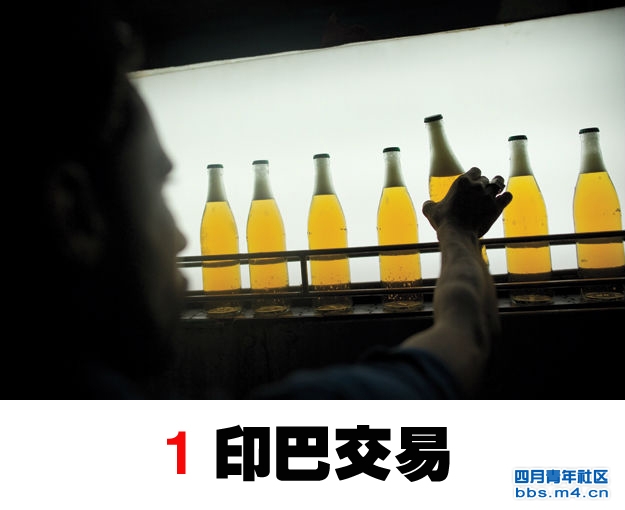
传统观点认为,印度和巴基斯坦长期以来在各方面都处于敌对状态,从克什米尔领土纠纷到2008年孟买的恐怖袭击,再加上互相瞄准的核导弹,他们恐怕不会在短时间内达成和平协议。但是在今年,这一对宿敌在一些无关领土边境、核武器与恐怖行动的方面,取得了几项颇为可喜的进展。换言之,双方或许开始认识到,政治紧张不利于经济发展。
两个国家之间的经济活动长久以来少得可怜,确切地说,到目前为止还是这样。2009年,印度对外贸易额中只有1%来自巴基斯坦,而巴基斯坦对外贸易额中只有1.7%来自印度。在双方绵延1800英里的边界上,只有一家海关邮局。但这一切都在悄然发生着变化,双方的贸易额从2004年到2011年增长了9倍。而且在9月份双方达成了几项重大贸易协定之后,还会继续增长。
作为协议的一部分,巴基斯坦同意逐步淘汰它的“黑名单”——数百种禁止从印度采购的商品,或许是出于安全考虑。与此同时,印度承诺降低巴基斯坦商品的关税。例如,印度人在印巴分治之后第一次可以喝到穆里啤酒。(没错,巴基斯坦伊斯兰共和国也有自己的酿酒厂。)
但是最大的变化还没有发生。两个宿敌还同意在阿塔里-瓦格赫边境开放一个新的检查站,巴基斯坦在今年年底将给予印度“最惠”待遇,也就是说,印度将得到和其它国家一样的贸易待遇。另一项大举措是,印度将放松对巴基斯坦游客的签证限制。(2009年,印度向巴基斯坦人发放了不到52000个签证,在新政府执政期间,这个数字将有大幅度上升。)印度一家工业集团预测,所有迹象都表明,这些变化在未来两年里将为双边贸易额增加80亿美元。
美国国务院在十月份表示,希望双方关系缓和的现象能推动克什米尔等问题的解决,我们希望如此。与此同时,或许长期以来不顾伊斯兰堡的多年抗议,依然对巴基斯坦棉花征收高额关税的华盛顿,也应该向印度学习如何改善与这位令人头痛的盟友之间的关系。

在一项撼动国家政坛的重大转变中,巴西变化了——几十年来第一次从人口出境国变为人口入境国。这种趋势得到了近期政府统计数据的印证,其原因在于与这个国家经济爆发式增长有关的一系列因素:南美人和亚洲人大批涌入世界第六大经济体;巴西海外侨民,包括在美国的侨民,纷纷回到本国寻求更好的工作机会;欧洲疲软的经济让众多葡萄牙人来到前殖民地寻找工作。(仅在2010年1月到2011年6月间,就有5万葡萄牙人获得巴西签证。)
但是,这样的变化引起了一些政治上的争议,也就是谁有资格进入这个国家。数字说明了一切:2012年初,大约有200万外国居民在巴西合法居住,非法移民的数量估计为60万人。外国人给巴西带来的受益是更多的经济发展机会——据测算,巴西在石油、矿产和科技等领域缺少20万到40万专业人士。但这也是政治上的一个挑战。
巴西目前依然在执行前军管政府在1980年实施的严格移民政策,尽管移民制度改革迫在眉睫,但从哪里着手依然是个争议问题。葡萄牙依然是巴西最大的移民人群,其后是邻国玻利维亚,中国移民数量也在增长。但是左派政府认为,改革意味着引进目前十倍数量的技术专业人士。但是,尽管失业率还不到6%,但公众并不欢迎越来越多的非技术性劳动力。(一位社会学家曾经把引进欧洲技术移民政策,和巴西利用移民来“漂白”自身19世纪晚期废除奴隶制度的身份相提并论。)
巴西还在为越来越多的非法移民头痛不已。1月份,4000多名海地人跨越美洲大陆,进入了这个国家荒僻的亚马逊丛林,政府因此开始限制海地人的工作签证,每月仅发放100个。但是据报道,海地人在今年依然从巴西与玻利维亚之间疏于防范的边境线大量涌入,还从北阿里克省得到了一些人道主义援助。巴西的经济增长或许让它在西半球走上与美国平起平坐的地位,但同时也接手了北半球最棘手的政治难题。
大迁徙——全球金融危机彻底改变了人类的迁徙方向。
轰鸣的吸气声——今年,墨西哥向美国的净移民数字为0,很快将出现几十年来的第一次负数。
绿宝石退场——爱尔兰境外移民人数达到了19世纪以来的新高,每个月有3000名爱尔兰人离开国家。
真正的亚洲轴心——亚洲移民大量涌入之后,亚洲人已经取代拉丁美洲人,成为美国增长速度最快的移民群体。
俄罗斯引力——突然之间有89876名移民进入俄罗斯,大部分来自中亚国家,这个人口数量一直下降的国家在2012年初竟然发现人口数量在90年代之后第一次出现增长。
逆反心理——一万名葡萄牙人在2011年离开了他们经济萎靡的祖国,来到前殖民地安哥拉。

在冰层迅速消融的北极,对自然资源的争夺主要是美国、加拿大、俄罗斯和中国等国家之间的竞争,它们奋力抢夺冰盖融化后袒露出无数新资源的开采权。但是当下,北极的原住民因纽特人(在美国被称作爱斯基摩人)正在努力争取居住地未来发展方向的决定权——包括利用资源聚宝盆获取利益。
居住在北极圈附近的因纽特人大约有16万,分布在阿拉斯加、加拿大、格陵兰和俄罗斯。近年来,他们通过一个非政府组织——1977年成立的因纽特人极地理事会——在政治上联合起来。尤其是在加拿大,因纽特人在他们的居住地获得了颇为强大的政治控制力。
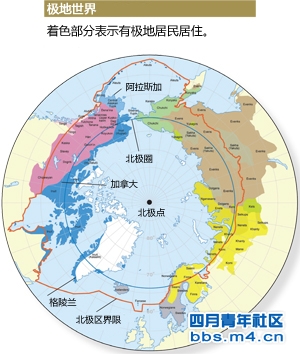
因纽特人一向反对石油和矿产开采项目,因为担心对环境的潜在损害以及不能延续他们传统的生活方式。但这一切都在发生改变,一部分人看到政治权力对于这个地区资源财富的重要性。改变的迹象出现在3月份,加拿大拉布拉多的因纽特政府部门实施了禁止开采铀矿的法令。9月份,加拿大努纳武特地区的一个因纽特人团体来到华尔街,为开采金矿、银矿、铜矿、锌矿和钻石项目寻找投资方。
格陵兰的政治筹码就更高了,那里的人口90%都是因纽特人。这片面积达83.6万平方英里的土地正在试图从丹麦全面独立出去,但是多年来它不得不依赖哥本哈根每年提供的5亿美元的社会福利。大片稀土金属资源在冰层消融之后可供开采,英国Cairn能源公司已经探明了丰富的石油蕴藏,格陵兰的政治经济独立之梦已经越来越现实了。据预测,格陵兰人均石油蕴藏量超过了科威特。
对于大部分北极圈居民来说,过上海湾国家那样的富足生活还只是一个遥远的梦想。但是我们可以坦然地认为,这片荒僻地区的生活必将发生巨大的变化。
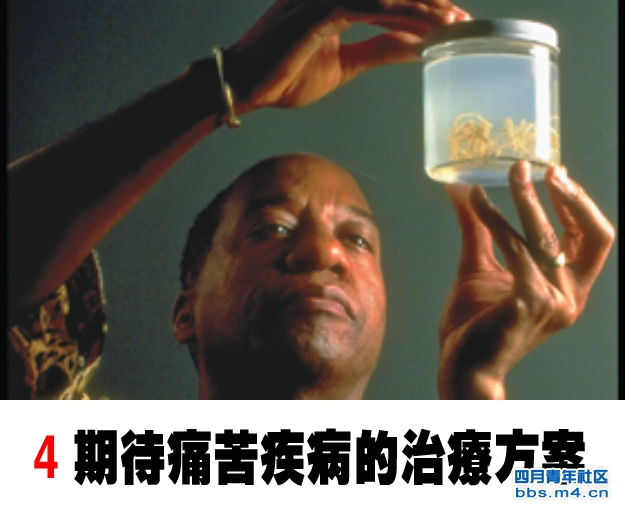
世界卫生组织(WHO)在今年宣布,2012年上半年在4个非洲国家中只诊断出396例几内亚龙线虫病例,与2011年同期相比下降了一半,与80年代肆虐非洲和亚洲的数百万病例不可同日而语。WHO认为再过几年,几内亚龙线虫将成为继天花之后,第二个被彻底根除的已知疾病。
这种病是一种痛苦的寄生虫疾病,通过引用受污染的水源,由寄生在患者体中的一种线状的虫子引起,患病部位通常是关节和四肢。尽管并非致命,但它会让患者身体连续几个月虚弱,受影响的地区经济将被彻底摧毁。目前为止还没有治疗药物,唯一的方法是在皮肤水泡下把虫子揪出,这种残忍、痛苦的手术让一些学者联想到代表古代医学的标志图案——缠绕在手杖上的毒蛇。这种疾病已经困扰了人类上千年,在埃及的木乃伊身上都曾发现过几内亚龙线虫。尽管它曾经在亚洲和中东肆虐,但这个虫子的名称依然来自病情最严重的非洲西海岸国家。
人们一直在努力打赢与这种疾病的战争。1986年,350万人感染这种疾病,美国前总统吉米•卡特和WHO,以及美国疾病防控中心牵头,设法根除几内亚龙线虫。与其它疾病不同之处在于,与几内亚龙线虫的战争重点并不在寻求治疗方案上,而是让人们了解它的传播方式,以及提升患病地区的饮用水质量。目前残留病例中99%都来自新近独立的南苏丹,所以,龙线虫是否会被根除主要取决于这个国家脆弱的和平环境能维持多久。
虫子的逆袭
几内亚龙线虫或许即将灭亡,但是医生们担心以下几种恶性疾病有抬头的趋势。
肺结核——几十年以前,肺结核就可以通过服用六个月的抗生素得以治愈。但是糟糕的诊断条件、治疗方案和药物使用导致2011年有870万新发病例,尤其是在东欧、印度、中国和非洲。
麻风病——早在公元前600年,麻风病在中国、埃及和印度被视为一种耻辱。当代社会已经找到了有效的治疗方案,WHO在1991年设定了一个目标——2000年彻底根除这种疾病。但是在去年,非洲和亚洲有21.9万新发病例。
痛风——这种在中世纪国王身上常见的疾病依然在折磨着普通西方人,这些人其实已经和国王一样有能力享受优越的饮食条件。600万美国人患有这种疾病,它会造成关节处剧烈的疼痛。自60年代以来,发病率翻了一番。
淋巴腺鼠疫——说它卷土重来或许有些过分,但是曾经夺去欧洲数百万生命的黑死病的确又在美国出现了。今年,俄勒冈州和科罗拉多州都发现人类病例,加利福尼亚一只松鼠也被检测出携带瘟疫病菌。每年全球都会发现1000到2000新增病例。

3D印刷技术已经有了巨大的突破,这是近十年中可以与互联网相媲美的颠覆性革新,为消费者和生产商营造出崭新机会。然而,就像所有颠覆性的发明一样,技术带来的利益永远无法摆脱争议,不同的声音已经出现了。
3D印刷机可以根据数据指示,在蜡或者高分子材料上塑造出物体的形状,而且这项技术还在不断发展——价格也在不断下降。低端设备的价格仅为1000美元,拥护者预测这项技术将派生出一批业余“制造商”,让消费者有机会从公司手中夺回生产工艺,为美国生产业带来全面复兴。但是,这种印刷机还有可能让玩具、厨具,甚至武器等物体变得易于仿制,像歌曲和电影一样被任意拷贝。
它已经把国际版权法带入了一个未知的领域。一家英国游戏公司最近要求一家3D印刷公司立即停止经营行为,因为它在制作热门桌面游戏《战锤》的实体角色。一位最近制作出著名的“彭罗斯三角”视觉幻想实体的荷兰设计师,向一个3D设计代码网站Thingiverse发出“删除通知”,因为后者在网站上公布了他的设计代码,供人免费下载。还有更离谱的事情,饱受争议的瑞典文件共享网站Pirate Bay在世界各地都是被起诉的对象,它宣布在今年将开始共享3D印刷设计代码。
3D印刷所带来的问题超越了版权层面,比如,这种产业如何才能和环境保护的步调一致?(总要有地方搞到高分子塑料。)我们可以有效控制危险物品的设计方案吗,比如枪和刀具?3D印刷机会让制造业消失吗?这些印刷机可以制造出技师的工具和日常消费品,但是我们在家中复制芭比娃娃、厨房刀具或者iPhone之前,必须先解决一些棘手的道德和法律问题。制造商们,去找你们的律师谈谈吧。
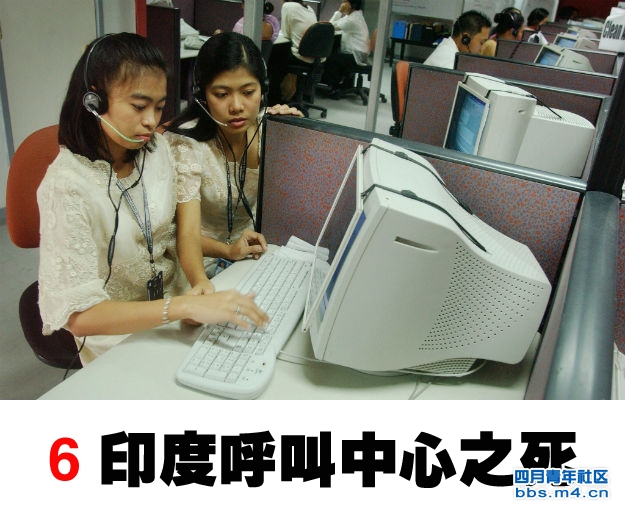
多年来,印度呼叫中心一直是被人传颂的全球化标志之一。大批年轻、教育程度甚高、提供24小时技术支持和客户服务的印度人,已经变成孟买廉价商店中出售的小说、美国情景喜剧和像《贫民窟的百万富翁》这类重磅影片中的主人公。但是,印度在呼叫中心之王宝座上的时间恐怕不会太久了。
实际上,到今年为止,为呼叫中心服务的菲律宾人数量已经超过了印度人。菲律宾的运作成本更低,而且一些美国高管认为,美国顾客觉得菲律宾人的讲话要比严重受英国影响的印度人更好理解。AT&T、JP摩根、Chase和Expedia等公司都在这个新兴的外包服务国家建立了自己的呼叫中心。
巴西、墨西哥、越南和几个东欧国家也在分割印度外包服务这块市场份额,据估算,印度的外包市场份额已经从80%以上降低到60%左右。印度在某些产业依然主导着外包市场——比如编写软件代码——但是未来的趋势也不乐观。外包服务巨擎印孚瑟斯的招聘,从去年45000人降低到今年的35000人,塔塔咨询公司也削减了2万人的招聘计划。
印度大批受过教育、能够讲英语的工人一度让这个国家具备极强的竞争优势,但分析人士认为,印度次大陆的外包市场已经接近饱和,其它国家的竞争力越来越强。具有讽刺意味的是,这部分产业的一个增长点在于把就业机会送回美国:例如印度的Aegis公司宣布,今年在达拉斯郊外成立的呼叫中心将聘请1000名美国人,这是它承诺增加4000个美国就业岗位计划的一部分。看来,还是印度的公司最先找到“美国工作机会向海外流失”的解决方案。
内包
让我们来看看把工作机会带回美国的几家公司。
卡特彼勒——这家建筑设备制造商在佐治亚州阿森斯市建造了一间工厂,将聘请1400人制造小型拖拉机和挖掘机。这些设备以前在日本相模生产,但卡特彼勒认为阿森斯工厂是一个“战略决定”,让公司和产品的大部分用户距离更近。
Master Lock——这家威斯康星公司在今年的国情咨文中被着重提到,2月份,巴拉克•奥巴马总统还亲自前往参观。Master Lock大约把100个工作岗位从中国转移到密尔沃基郊外的工厂,现在那里在荒废了15年之后第一次满负荷运转。
通用汽车——当通用汽车首席信息官Randy Mott在接受《信息周刊》采访时说,他将在未来三年彻底整合公司的IT架构时,印度的IT服务商大吃一惊。通用汽车目前外包了90%的IT功能,Mott说他希望把这些功能收回公司,并且有计划在美国聘请软件开发商、数据专家和其它IT专业人士。
星巴克——遍布世界的西雅图咖啡制造商在为2万个咖啡杯寻找供应商时,找到了俄亥俄东利物浦的American Mug and Stein公司,那里被称为“世界陶都”。星巴克还宣布,今年将在佐治亚州奥古斯塔建立一座工厂,生产速溶咖啡和星冰乐饮品的原料。
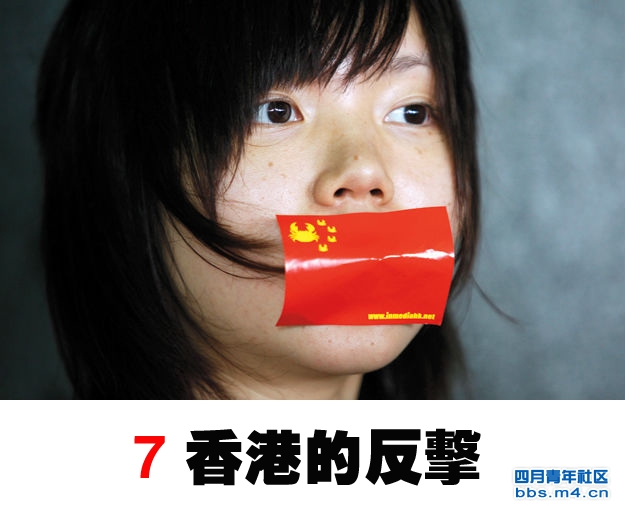
80年代,中国领导人邓小平提出“一国两制”的设想,目的是让香港从英国控制下回归中国。尽管它目前是人民共和国的官方领土,但香港可以保留它相对开放的政治和经济制度。
这样的安排在1997年正式交接之后运作得还相对不错,但是最近,这种制度的未来发展遭到了质疑。2012年初,香港人上街行走,抗议一位著名的中国教授把这个城市的人称为顾念殖民生活的“狗”。之所以出现这样的语言,是因为香港一所大学调查发现,当前只有16.6%的香港居民认同自己中国人的身份——这是1997年以来的最低点。
香港与大陆今年来的紧张关系呈现出丑陋的民族主义倾向。香港人有时候把大陆游客称作“蝗虫”,并且公开抵制所谓的孕期旅游——大陆母亲到香港产子,这样他们的孩子就可以获得他们所觊觎的居民身份。一个标志性的事件是,一个在互联网上流行的手机视频在香港地铁上,拍摄到一个香港乘客殴打一名大陆妇女,因为她让自己的孩子在车厢里吃东西。事情发展到后来,这位乘客拉动了地铁的紧急制动闸,并且叫来警察处理此事。
这些事都是秋天发生的更大事件的序曲。由北京认命的香港特首宣布在学校教材中引入“国民道德教育”计划,整个城市沸腾了。新教材意在提升全国的爱国主义情操,但是很多香港人认为这是对儿童的洗脑,以及刻意降低在世界排名领先的学校的教学质量。即使在政府退步,删除了教材中的这些内容之后,10万名有组织的愤怒群众和27500名警察在9月份走上街头。一个极富内涵的场景是,香港人在反华行走中开始挥舞殖民地时期的旗帜。
今年一整年,北京在南中国海的穷兵黩武成为了全国关注的大事。但是,或许我们应该注意中国后院是否会起火。
那么,中国的教科书中到底写了写什么?
被使用最普遍的高中教材《政治思想》揭示出一些问题。有的章节名称是“资产阶级的灭亡和无产阶级的胜利是同样不可避免的”,这本书强调,和谐社会中的公民“需要一个理解公众愿望、反映人民心声、集中人民智慧、重视人民力量的权威政府”。
香港那些思想自由的父母在看到以下诋毁资本主义的段落时,或许也不会很高兴:
“当今世界,资本主义制度推动了欧洲和美国的发展,但是为中国争取资本主义制度只会带来痛苦和梦想的破灭。中国是一个具有五千年历史的文明古国,为人类政治和文明做出了巨大的贡献。”

塞浦路斯像很多南欧国家一样,也需要大笔的资金援助来躲过欧洲金融危机。但是,它往往会寻求莫斯科的帮助,而不是去找布鲁塞尔,这让人们猜想,这个新加入欧盟的国家是否更愿意向东方而不是西方靠拢。俄罗斯在2011年给塞浦路斯提供了31亿美元贷款,目前还在考虑进一步拿出62亿美元,这相当于这个国家整个经济规模的三分之一。
塞浦路斯在2004年加入欧盟时就饱受争议,原因一方面是这个岛国北部与土耳其的领土争议,另一方面是它作为俄罗斯投资避风港的身份。实际上,这两个正统基督教国家近年来的关系愈加密切。俄罗斯的优势的确很明显:它所提供贷款的附加条件比严肃苛刻的欧洲国家少很多。但是,在俄罗斯接受教育的塞浦路斯总统季米特里斯•赫里斯托菲亚斯,是欧盟中唯一一个共产主义领导人。他强力奉行亲俄外交政策,经常批评北约(最近的争议声更加喧嚣,因为塞浦路斯在6月份开始担任欧盟的轮值主席国)。俄罗斯商人在这座岛屿上投入重金,度假城市利马索尔的俄罗斯人非常多,当地人称这里为“利马索尔格勒”。
让欧盟头痛的还有潜在的安全问题。俄罗斯的支持强化了塞浦路斯政府与土耳其在岛屿北方领土纠纷问题上的姿态。与此同时,俄罗斯把塞浦路斯视为维持其在中东地区影响力的宝贵财产。1月份,一艘俄罗斯军舰携带提供给巴沙尔•阿萨德的叙利亚政府的军火,在塞浦路斯港口停靠。
双方都认为这是一个双赢的局面,塞浦路斯在2015年之前,有60亿欧元的预算缺口等待填补,只要有人愿意伸出援手,它都会接受。但是,这会让欧洲重新考虑,到底该不该让塞浦路斯加入自己的俱乐部。在与土耳其领土纠纷的一次谈判失败后,德国总理安吉拉•对局势再了解不过了。她说,塞浦路斯是个“有问题的国家”,不应当成为欧盟成员。
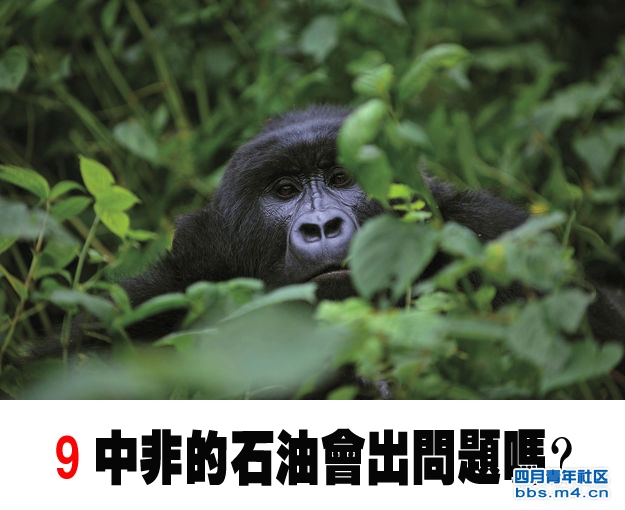
近年来,国家之间的战争凸显出“冲突资源”所扮演的角色,比如在很多电子设备中使用的钶钽铁矿,它让刚果民主主义共和国与周边国家陷入让人难以释怀的暴力战争。但是,还有另一个更加危险的因素在酝酿中,刚果明显坐拥巨大的一片石油。
有多大?这个地区的油田大约藏有60亿桶石油,是几十年来发现的最大油田,价值相当于刚果整个国家GDP现值的28倍。英国石油公司索科在今年得到了刚果政府的批准,在与乌干达交接的维龙加国家公园内进行勘探。刚果碳氢化合部长说,如果探明储量巨大,刚果或许会修改法律,允许在那里进行开采。维龙加是非洲最古老的国家公园,也是罕见的山地大猩猩的居住地。
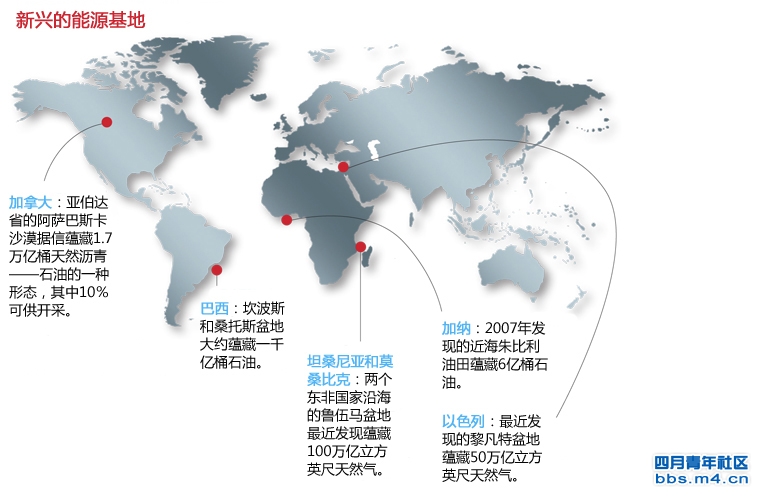
除了环境恶化的后果之外,石油还有可能成为地缘政治危机的导火索。据信,油田的位置覆盖了面积达23000平方英里的北基伍省,那里是政府军和图西反叛组织长年敌对的战场。过去几十年里,数十万人流离失所,今年暴力冲突又有升级的迹象。让事情变得更加复杂的是刚果和乌干达的边界划定问题,双方在2007年的军事冲突之后,问题一直没有解决。(乌干达也计划在石油问题上大做文章,最近它估算境内的石油储量达35亿桶。)在刚果的另一边,它还没有妥善解决与安哥拉在西海岸天然气的纠纷。

即使目前只有一家石油公司在运作,石油也已经是金撒沙(刚果民主主义共和国首都)的主要收入来源。正如国际危机组织所指出,刚果的石油产业一直以腐败和浪费著称。这家组织担心任何新探明的石油,或许将煽动分裂组织的情绪,重燃边境战火,“重新规划这个国家的地缘政治角色”。对一个动荡不安,又坐拥丰富资源的政权来说,发现黑金似乎并不会造成多大的改变。
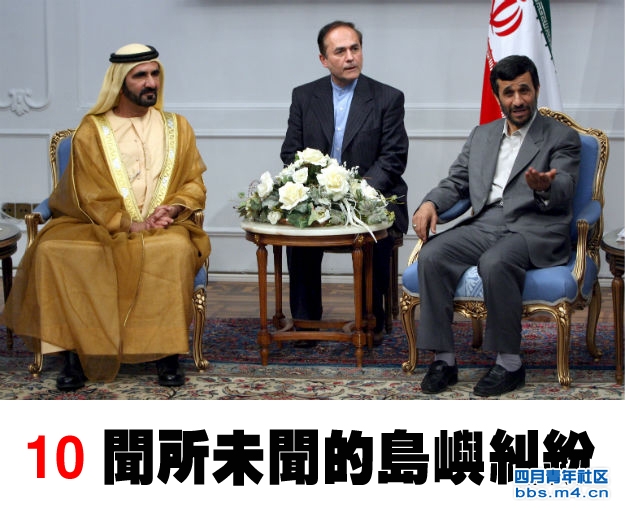
今年,世界的目光都放在日本和中国针中国东海一系列岩石丛生的小岛的宿怨上。但是,距此几千英里的西方,另一个岛屿纠纷也在蠢蠢欲动。
伊朗和阿联酋都声称对波斯湾的阿布穆萨岛拥有主权,那里的居民有2000人,周边两个小岛无人居住。双方的纠纷起始于1971年,当时岛屿由沙迦酋长国控制。伊朗王利用英国人撤离后留下的权力真空期,派兵夺取了阿布穆萨和周边岛屿的控制权。最终几方达成一致意见,现已归属阿联酋的沙迦负责管辖岛屿,但伊朗有权在那里驻军。现在,阿联酋声称伊朗违反协议,增加了驻军数量,还在阿布穆萨修建了机场等设施。

这不仅仅是象征性的争取地盘,岛屿靠近穆巴雷克油田,横跨具有战略意义的霍尔穆兹海峡入口,世界20%的石油通过这里运输。
长期的不合在今年4月份突然爆发,伊朗总统穆罕默德•艾哈迈德内贾德以挑衅的姿态在阿布穆萨庆祝伊朗的波斯湾国庆日。内贾德登岛之后,宣称持有历史文件证明“波斯湾是波斯人的”。阿联酋政府立即撤回了驻德黑兰大使,把伊朗大使召集到阿布扎比,提交正式的抗议文件,还向联合国提出抗议。阿联酋要求国际法庭对这个问题做出判决。
纠纷出现的时机,正是伊朗与其海湾邻国关系持续紧张的时候。为了防备伊朗,阿联酋是目前世界第九大武器进口国,2011年从美国采购了35亿美元军火。对伊朗政府来说,挑起民众对这些岛屿的民族主义情绪,是转移对经济困境问题关注的有效手段。就像在东亚,岛屿虽然小得不值一提,但对双方的意义是巨大的。
原文:
The conventional wisdom holds that India and Pakistan, which remain locked in conflict over everything from the disputed territory of Kashmir to the 2008 Mumbai terrorist attacks, while pointing dozens of nuclear-armed missiles at each other, are not going to cut a permanent peace deal anytime soon. This year, however, the perennially feuding neighbors finally notched several key positive developments that had nothing to do with borders, nukes, or terrorism. In short, both sides may be realizing that political tension is bad for business.
Economic activity between the two bitter enemies has long been pitifully minimal. Until now, that is. In 2009, only 1 percent of India's trade was with Pakistan, and only 1.7 percent of Pakistan's was with India. A total of one customs post is open along their 1,800-mile border. But that has been changing. Trade between the two countries increased ninefold to $2.7 billion between 2004 and 2011 and is likely to increase further after the signing of several key trade agreements this past September.
As part of those deals, Pakistan agreed to phase out its "negative list" -- hundreds of items that cannot be purchased from India, supposedly for security reasons. India, meanwhile, promised to reduce import duties on Pakistani goods. Indians, for example, will now be able to enjoy Murree beer for the first time since Partition. (Yes, the Islamic Republic of Pakistan has its own brewery.)
But the biggest boost may be yet to come. The two longtime enemies also agreed to open up a key checkpoint at the Attari-Wagah border crossing, and Pakistan will grant India "most favored" status by the end of this year, meaning that it must be accorded the same treatment in trade policy as other countries. In another big move, India also loosened its visa requirements for Pakistani travelers. (In 2009, India issued fewer than 52,000 visas to Pakistanis, a number that is expected to increase dramatically under the new regime.) All told, an Indian industry group estimates, the changes will allow bilateral trade to increase to $8 billion in the next two years.
The U.S. State Department expressed hope in October that the thaw could lead to progress on issues like Kashmir. And maybe it will. In the meantime, perhaps Washington, which maintains steep tariffs on Pakistani cotton despite years of protest from Islamabad, should instead be taking notes from India on how to improve relations with its most troublesome ally.
In a monumental shift that is roiling the country's politics, Brazil has switched -- for the first time in decades -- from being a net exporter to a net importer of people. The development, confirmed in recent government statistics, has been driven by a number of factors related to the country's explosive economic growth of recent years: South Americans and Asians flocking to the world's sixth-largest economy, Brazilian expats in countries like the United States returning home for more abundant jobs, and the European economic slowdown that is seeing a wave of Portuguese headed to work in the former colony (more than 50,000 got visas just between January 2010 and June 2011).
But with the shift has come political controversy over who should be allowed to enter the country. The numbers tell the tale: At the beginning of 2012, there were approximately 2 million foreign nationals living legally in Brazil and an estimated 600,000 undocumented immigrants. The interest from foreigners is an economic opportunity for Brazil -- which has an estimated shortage of between 200,000 and 400,000 qualified professionals in fields like oil, mining, and technology -- but it is also a political challenge.
Brazil still has tight immigration restrictions put in place by the country's former military government in 1980, and though immigration reform is clearly needed, there's controversy over what form it should take. Portugal is still by far the largest source of immigrants to Brazil, followed by neighboring Bolivia. The Chinese population is growing as well. But Brazil's center-left government is considering reforms meant to bring in 10 times the current number of skilled professionals. Even though the unemployment rate is still below 6 percent, however, there's little public appetite for allowing in more unskilled labor. (One sociologist has compared the policy of focusing on skilled European migrants to Brazil's use of immigrants to "whiten" the country after the abolition of slavery in the late 19th century.)
Brazil is also grappling with a growing illegal-immigration problem. In January, after some 4,000 Haitian immigrants made their way across the Americas to enter the country's remote Amazon region, the government restricted the number of work visas for Haitians to just 100 per month. But Haitian migrants have reportedly continued to flow in this year through the country's sparsely protected border with Bolivia and are receiving humanitarian aid from northern Acre state. Brazil's economic growth may have put it in a position where it now rivals the United States for influence in the Western Hemisphere, but it has also inherited one of the north's thorniest political dilemmas.
EXODUS
The global financial crisis has dramatically changed who is moving where.
That giant sucking sound
Net migration from Mexico to the United States hit zero this year and may soon reverse for the first time in decades.
Emerald exit
Emigration from Ireland has hit its highest point since the 19th century, with 3,000 Irish nationals leaving the country per month.
The real Asian pivot
Thanks largely to increased immigration, Asians have overtaken Latinos as the fastest-growing group in the United States.
The Russian magnet
With an influx of 89,876 immigrants, mostly from Central Asia, demographically declining Russia in early 2012 saw its largest population increase since the early 1990s.
Reverse psychology
Ten thousand Portuguese left their economically struggling country for former colony Angola in 2011.
The rush for natural resources in the rapidly melting Arctic has generally been described as a competition between countries, with the United States, Canada, Russia, and, increasingly, China jockeying for mining and oil drilling rights as the polar ice cap shrinks to reveal untold new riches. But now the original inhabitants of the Arctic, the Inuits (known as Eskimos in the United States), are pushing for a greater role in shaping the future of their region -- including cashing in on the resource bonanza.
An estimated 160,000 Inuits live in the Arctic, spread across Alaska, Canada, Greenland, and Russia. In recent years, they have been increasingly politically unified through an NGO known as the Inuit Circumpolar Council, founded in 1977. In Canada in particular, Inuits have carved out significant political control over their territory.
Inuit groups often opposed mining and oil projects in the past, worried about the potential environmental damage and disruption to their traditional way of life. That is changing, however, as some groups see the prospect of political power in the region's resource wealth. The trend began in March, when the Inuit government of Labrador, Canada, lifted a ban on uranium mining. Then in September, an Inuit group from Canada's Nunavut territory traveled to Wall Street to find investors for a project to mine gold, silver, copper, zinc, and diamonds.
The political stakes are even higher in Greenland, whose population is close to 90 percent Inuit. The 836,000-square-mile territory is looking to complete its transition to full independence from Denmark, but has for years depended on half a billion dollars a year in welfare payments from Copenhagen. With large deposits of rare-earth metals now accessible as the island's ice cap melts, and sizable oil deposits that are already being explored by Britain's Cairn Energy, Greenland's dream of economic and political independence is starting to look more realistic. According to some estimates, Greenland may contain more oil per capita than Kuwait.
Gulf-level riches are still a long way off for most of the Arctic Circle's residents. But it's safe to say that the way of life in this remote region is about to be dramatically transformed.
The World Health Organization (WHO) announced this year that only 396 cases of Guinea worm disease had been diagnosed in four African countries in the first half of 2012, down from twice that many in the first half of 2011 and millions throughout Africa and Asia during the 1980s. The WHO thinks that sometime in the next couple of years Guinea worm will become the second known disease, after smallpox, to be completely eradicated.
The disease is a painful parasitic affliction caused by a long, threadlike worm that grows in the patient's body, usually in joints and extremities, after being ingested in contaminated water. Although usually not fatal, it is debilitating for up to months on end and can wreak economic devastation on the communities it afflicts. There's no known cure, and the only remedy is pulling out the worm through a skin blister -- a brutally painful operation that some scholars think may have inspired the ancient snake-and-staff symbol used by the medical profession. The disease has been known to afflict humans for thousands of years, and Guinea worms have even been found in the bodies of Egyptian mummies. Although once common throughout Asia and the Middle East, the worm owes its name to its former prominence on Africa's west coast.
The successful war on the worm has been long in the making. In 1986, former U.S. President Jimmy Carter, along with the WHO and the U.S. Centers for Disease Control and Prevention, spearheaded an effort to eliminate Guinea worm disease at a time when 3.5 million people were affected. Unlike with other diseases, the campaign against Guinea worm has focused not on developing a cure, but on educating people about how it spreads and improving water quality in affected areas. Ninety-nine percent of the cases remaining are in newly independent South Sudan, so whether the worm can be eradicated entirely may depend on whether the country's fragile peace can be maintained.
COMEBACK BUGS
Guinea worm may be down and almost out, but doctors worry that the following nasty diseases are poised to pick their heads off the mat.
Tuberculosis
TB has been treatable for decades through a six-month antibiotics course. But poor-quality diagnoses, treatment, and medicines contributed to the rise of 8.7 million new cases in 2011, particularly in Eastern Europe, India, China, and parts of Africa.
Leprosy
As early as 600 B.C., leprosy was stigmatized in China, Egypt, and India. The modern world has an effective treatment regimen, and in 1991 the WHO set a goal of eliminating the disease by 2000. Yet 219,000 new cases were reported last year, mostly in Africa and Asia.
Gout
The disease of medieval kings has returned to hobble average Westerners who now have a king's capacity for indulging in rich diets. Six million Americans report suffering from the disease, which causes intense pain in the joints, and rates have more than doubled since the 1960s.
Bubonic plague
To call it a comeback might be strong, but the same Black Death that wiped out millions in Europe has cropped up in the United States, with human cases reported this year in Oregon and Colorado, and a ground squirrel testing positive for plague exposure in California. Between 1,000 and 2,000 cases of plague are still reported worldwide each year.
It was a breakthrough year for 3-D printing, a technology that could be as transformative this decade as the Internet was in the last one, creating thrilling new opportunities for both consumers and producers. As with all disruptive innovations, however, the benefits are not likely to come without controversy, and the disputes have already begun.
Three-dimensional printers, which mold objects out of wax or plastic polymers according to digital instructions, are getting more advanced -- and cheaper. With simple versions now selling for as little as $1,000, proponents predict the technology will usher in a new class of amateur "makers," enabling consumers to seize back the means of production from corporations, and bring renewed prosperity to U.S. manufacturing. But the printers are also raising the possibility that physical objects from toys to kitchen appliances to weapons will be as easy to copy and share as songs or movies.
This is already taking international copyright law into unknown territory. A British game company recently sent a cease-and-desist order to a 3-D printer owner who was making physical copies of objects from the popular board game Warhammer, and a designer in the Netherlands who recently printed a physical version of the famous "Penrose Triangle" optical illusion has sent a "takedown notice" to Thingiverse, an online repository of 3-D printer design codes, for sharing his design online for anyone to download for free. Further raising the stakes, the Pirate Bay -- the controversial Swedish file-sharing site that has been the target of lawsuits around the world -- announced this year that it is starting a new service to share 3-D printing designs.
The questions raised by 3-D printing go beyond copyright. How can it be made environmentally sustainable? (Plastic has to come from somewhere.) Can we control the distribution of designs for dangerous objects like guns and knives? Will 3-D printers kill manufacturing jobs? These printers are going from toys for techies to must-have consumer products. But before we can reproduce the latest Barbie, kitchen knife, or iPhone at home, some tricky moral and legal debates still need to be resolved. Makers, meet the lawyers.
For years, the Indian call center has been the ultimate globalization cliché. The armies of young, overeducated Indians providing round-the-clock tech support and customer service have turned up in dime-store novels in Mumbai, sitcoms in the United States, and blockbuster films like Slumdog Millionaire. But India may not be the king of the call center for much longer.
In fact, as of this year, more Filipinos than Indians now work in call centers. Operating costs in the Philippines are cheaper, and some U.S. executives say American customers find Filipinos' speech easier to understand than the British-inflected English spoken by Indians. Companies including AT&T, JPMorgan Chase, and Expedia have all hired call centers in outsourcing's emerging power.
Brazil, Mexico, Vietnam, and several Eastern European countries are also cutting into India's market share of the outsourcing sector, which according to some estimates has fallen from more than 80 percent to around 60 percent. India's lead appears secure in some types of outsourcing -- software coding, for instance -- but the signs for the future do not bode well. Outsourcing giant Infosys cut its hiring from 45,000 last year to 35,000 this year, and Tata Consultancy Services cut its recruitment by 20,000.
India's masses of educated, English-speaking workers once gave the country an edge, but analysts say the outsourcing market has become saturated in the subcontinent even as other countries have figured out how to compete. Ironically, one possible area of growth for the industry may be shipping jobs back to the United States: India's Aegis, for one, this year announced plans to hire 1,000 new workers at a call center outside Dallas as part of a pledge to add more than 4,000 new American workers. It may turn out that the companies that figure out how to stop "shipping American jobs overseas" are Indian.
THE INSOURCERS
Meet the companies bringing jobs back to America.
Caterpillar
The construction-equipment manufacturer is building a plant in Athens, Georgia, that will employ 1,400 and produce small tractors and excavators. The equipment had previously been built in Sagami, Japan, but Caterpillar said the Athens factory was a "strategic decision" to move closer to the majority of its customers who use the machines.
Master Lock
The Wisconsin company was highlighted in this year's State of the Union address and got a visit from President Barack Obama himself in February. Master Lock has moved about 100 jobs from China back to its plant outside Milwaukee, which is now running at capacity for the first time in 15 years.
General Motors
Indian information-technology vendors were stunned when GM Chief Information Officer Randy Mott told InformationWeek he wants to overhaul how his company does IT work over the next three years. GM currently outsources about 90 percent of its IT functions; Mott said he wants that number to be in-house, and he plans to hire software developers, database experts, and other IT professionals in the United States.
Starbucks
When the ubiquitous Seattle-based coffee maker went looking for a supplier to produce 20,000 coffee mugs, it turned to American Mug and Stein in East Liverpool, Ohio, known as the "Pottery Capital of the World." The contract is part of the company's "Create Jobs for USA" initiative. Starbucks also announced this year that it will build a factory in Augusta, Georgia, to help make instant coffee and the ingredients for its Frappuccino drinks.
In the 1980s, Chinese leader Deng Xiaoping proposed the notion of "one country, two systems" for Hong Kong's return from British control. While formally part of the People's Republic, Hong Kong would be allowed to preserve its more open political and economic system.
The arrangement has worked relatively well since the formal handover to Chinese control in 1997, but lately, the future of the deal has been called into question. In early 2012, Hong Kongers took to the streets to protest remarks by a prominent Chinese professor who referred to the city's inhabitants as "dogs" still harboring a colonial mindset. The remarks came in the wake of a University of Hong Kong survey that found that only 16.6 percent of residents now identify themselves as Chinese -- the lowest number since 1997.
Tensions between Hong Kong and the mainland in recent years have taken on an ugly nationalist edge. Hong Kongers sometimes refer to mainland visitors as "locusts" and decry the common practice of pregnancy tourism, in which mainland mothers come to Hong Kong to give birth so that their children will have coveted residency permits. In one emblematic incident, a cell-phone video went viral of passengers on a Hong Kong subway berating a mainland woman for letting her daughter eat on a train. The argument became so heated that one of the passengers pulled the train's emergency brake to summon the authorities.
This was all prelude to this fall, when the city-state erupted over a "moral and national education" plan for school curricula announced by Hong Kong's Beijing-appointed chief executive. The new curriculum was meant to promote China-wide patriotism, but many Hong Kongers saw it as a plan to brainwash their children and dumb down their schools, which are ranked among the world's best. Angry crowds, estimated at 100,000 by organizers and 27,500 by the police, took to the streets in September, even after the government backed down and removed the curriculum. In one telling sign of the times, Hong Kongers have begun waving the city's colonial-era flag at anti-China rallies.
Over the past year, Beijing's saber rattling in the South China Sea has become a national preoccupation. But perhaps we should be paying more attention to what's happening in China's own backyard.
SO WHAT'S IN A CHINESE TEXTBOOK, ANYWAY?
The popular high school textbook series Political Thoughts gives some indication. With chapter titles like "The Destruction of the Bourgeois and the Victory of the Proletariat Are Inevitable," the books make the case that citizens in a harmonious society "need an authoritative government that understands public opinion, reflects the will of the people, distills the knowledge of the people, and treasures the strength of the people."
Parents in more freewheeling Hong Kong probably wouldn't be too happy either with passages like this one on the flaws of capitalism:
"In the modern age, establishing capitalist systems has advanced the development of Europe and the United States. But striving for capitalism for China will bring it only grief and the destruction of dreams. China is a civilized, ancient nation with more than 5,000 years of history, which has made a great contribution to the advancement of the politics and civilization of humanity."
Tiny Cyprus, like many countries in Southern Europe, has needed bailouts to keep its economy afloat during the eurocrisis. More often than not, however, it has turned to Moscow rather than Brussels for the cash, raising concerns about whether one of the European Union's more recent members is more oriented toward East or West. Russia gave Cyprus a $3.1 billion loan in 2011 and, as of this writing, is considering ponying up another $6.2 billion, equivalent to more than one-third of the country's entire economy.
Cyprus was a controversial case when it joined the EU in 2004, because of both the dispute over the island's Turkish-dominated northern half and its status as an opaque haven for Russian investment. Indeed, recent years have seen increasingly close ties between the two Orthodox Christian countries. Part of the attraction is practical: Moscow imposes fewer conditions on its loans than the austerity-insistent Europeans. But Russian-educated President Demetris Christofias, the only communist leader in the European Union, is also staunchly pro-Moscow in his foreign policy and a frequent critic of NATO. (This has been particularly controversial lately, as Cyprus took over the rotating presidency of the EU in June.) Russian businesses have invested heavily on the island, and the southern resort city of Limassol now has so many Russian residents that locals have taken to calling it "Limassolgrad."
It's also something of a security headache for the EU. Russian support helps bolster the Cypriot government's position in its conflict with Turkey over the status of the island's northern half. Russia, meanwhile, may see Cyprus as a valuable asset in its efforts to maintain influence in the Middle East. A Russian ship apparently carrying arms to Bashar al-Assad's embattled Syrian regime made a stop in Cyprus in January.
Both sides clearly see the arrangement as a win-win, and with 6 billion euros needed to fill a budget gap before 2015, Cyprus is looking for help from whoever will provide it. But it could well backfire as Europe reconsiders whether it should have admitted Cyprus into its club in the first place. After one failed round of negotiations aimed at resolving the dispute with Turkey, German Chancellor Angela Merkel couldn't have been clearer: Cyprus, she said, is a "problematic country" that should not have become an EU member.
In recent years, international campaigns have highlighted the role that "conflict minerals" such as coltan, used in many electronic devices, have played in perpetuating violence in the Democratic Republic of the Congo and its neighbors, but there's a potentially even more dangerous conflict brewing now that Congo is apparently sitting on an awful lot of oil.
How much? The region's oil fields may contain as much as 6 billion barrels -- the area's largest oil discovery in decades and worth about 28 times Congo's entire GDP at current prices. British oil firm Soco secured permission from Congo's government this year to survey the find inside Virunga National Park, near Congo's border with Uganda. If significant deposits are confirmed, the country's hydrocarbons minister says, Congo could amend its laws to allow drilling there, even though Virunga is Africa's oldest national park and a haven for rare mountain gorillas.
Beyond the environmental consequences, the oil could become a geopolitical flash point. The area where the oil is thought to lie overlaps with the 23,000-square-mile North Kivu province, site of a years-long conflict between the government and Tutsi rebel groups that forced hundreds of thousands to flee over the past decade and where renewed violence broke out again this year. Making matters still more complicated are outstanding border-demarcation issues between Congo and Uganda left over from a military clash between the two sides in 2007. (Uganda is also looking to make an oil play, having recently upped its estimated reserves to 3.5 billion barrels.) On the other side of Congo, the country has yet to resolve a dispute with Angola over natural gas deposits off its west coast.
Even with only one oil company producing so far, oil is already Kinshasa's main source of revenue, and as the International Crisis Group noted this year, Congo's oil industry has long been defined by corruption and waste. The organization worries that any new oil finds "could redefine the country's geopolitics" by encouraging secessionist groups and reigniting border disputes. In a volatile region long cursed by its bountiful resources, the discovery of black gold seems unlikely to improve the situation.
The world has focused this year on the feud between Japan and China over a series of small, uninhabited rocks in the East China Sea. But thousands of miles to the west, another island dispute is brewing.
Both Iran and the United Arab Emirates (UAE) claim sovereignty over the Persian Gulf island of Abu Musa, home to about 2,000 people, and two uninhabited islands nearby. The dispute dates to 1971, when the islands were under the control of the sheikhdom of Sharjah. The Shah of Iran, seizing on the power vacuum left by the British withdrawal from the region, sent troops to seize Abu Musa and its lesser neighbors. A deal was eventually reached under which Sharjah, now part of the UAE, would maintain sovereignty, but Iran would have the right to base troops there. Now, the UAE claims Iran has violated the agreement by increasing its military presence and building infrastructure, including an airport, on Abu Musa.
This is no mere symbolic turf fight. The islands are located near the massive Mubarek oil field and stand astride a strategically important location at the entrance to the Strait of Hormuz, through which 20 percent of the world's oil supply passes.
The long-simmering dispute boiled over in April when Iranian President Mahmoud Ahmadinejad provocatively chose to visit Abu Musa to celebrate Iran's National Day of the Persian Gulf. While on the island, Ahmadinejad claimed to possess historical documents proving that "the Persian Gulf is Persian." The Emirati government quickly withdrew its ambassador from Tehran, summoned the Iranian ambassador to Abu Dhabi to issue a formal letter of protest, and registered a complaint with the United Nations. The Emiratis have also asked for a ruling from the International Court of Justice on the issue.
The dispute comes at a time of renewed tensions between Iran and its neighbors across the gulf. With an eye on Iran, the UAE is now the world's ninth-largest arms buyer, making a $3.5 billion purchase from the United States in 2011. For the Iranian government, stirring up nationalist sentiment over the islands is a handy distraction from economic woes. As in East Asia, the islands may be small, but the stakes couldn't be bigger.
|
评分
-
1
查看全部评分
-
|